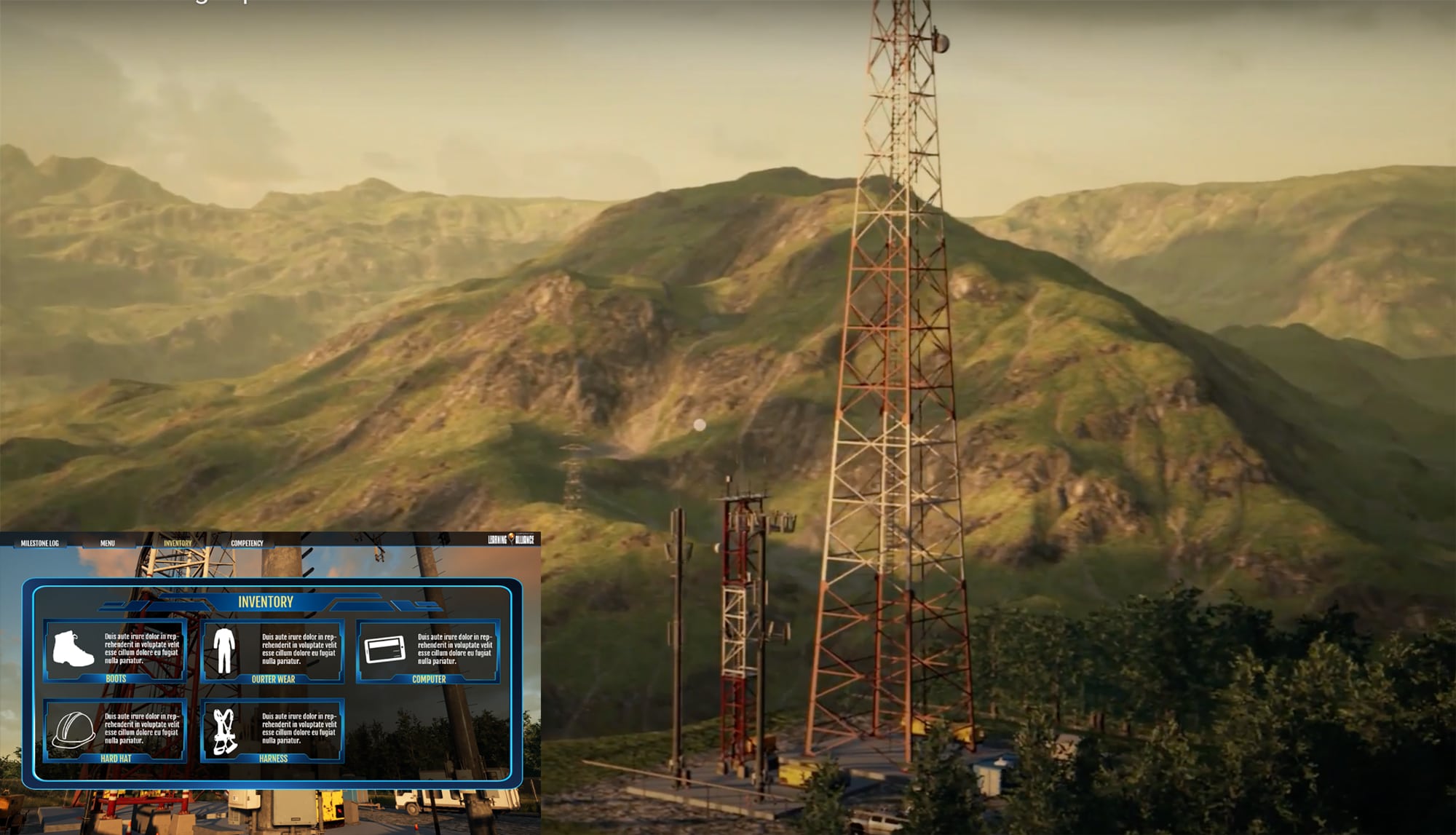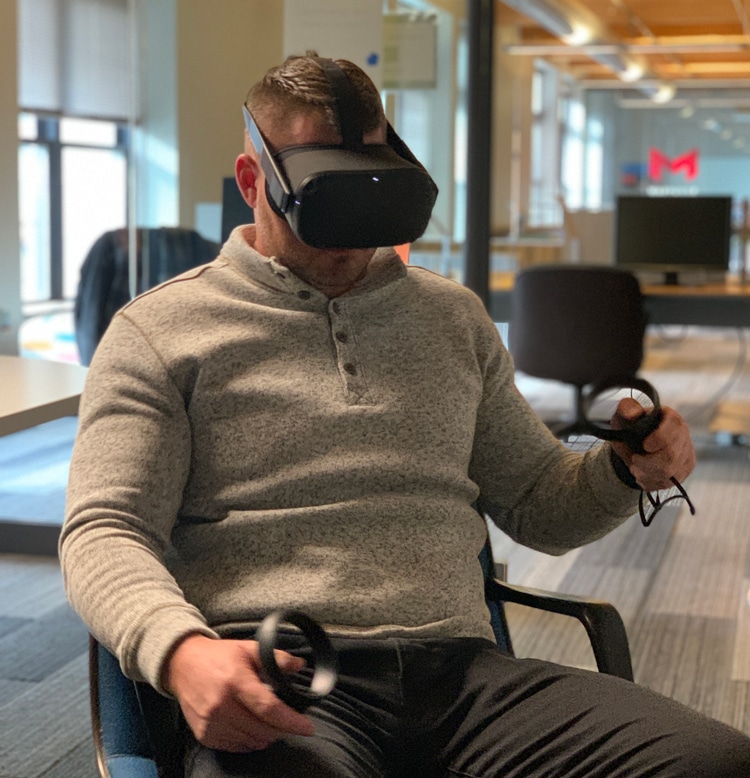
3D App Development for Virtual Technologies
Interactive 3D Development for Immersive 3D Environments
SDKs and Streaming Applications for AR/VR, web, desktop and mobile apps
3D App Development Process
What does it take to make an amazing VR, AR or 3D web application? What platform should you use to develop your application? If you don’t know the process, chances are you haven’t found the right developer.
ARS creates immersive real time virtual environments that can be accessed in multiple platforms, such as: virtual reality (VR), augmented reality (AR), mixed reality (MR), 3D web applications, and 3D desktop applications. These environments use cutting edge realism and allow viewers to rotate and move through scenes or create digital information overlays onto the real world.

Virtual Reality Developer Platforms
Virtual Reality uses VR hardware through a PC connection or a Standalone Headset that works wirelessly. There are many types of VR headsets. Each has their own advantages. Desktop VR can often reproduce higher quality, but it requires a high end personal computer (PC) to process the information. Standalone headsets do not require a connection to a PC. This hardware is great for mobility. However, processing power is reduced for less realism. A good VR developer will make either experience as immersive as the other.
Head-mounted displays (HMD) are the most common devices. The user wears a head mounted display for full immersion into a virtual environment. VR hardware often utilizes controllers. The user moves around in a virtual world and uses controllers to select items in the VR environment or teleport to different locations in the virtual world. A standalone HMD is an alternative virtual reality hardware in which the user wears a hand-held VR device.

Augmented Reality Developer Platforms
Augmented Reality overlays an interactive experience onto the real world with computer generated perceptual information. In other words, AR allows users to interact with virtual objects and data seamlessly within the context of their environment. We can blend data visualizations, video, 3D characters, models, and simulations as if they were right in front of your phone’s camera. AR adoption is growing through the use of smartphones, tablets, and eyewear (such as Microsoft Hololens). More B2B applications utilize AR developers, including: entertainment, training, marketing and education, due to its proven ability to increase engagement and brand awareness.
3D Web Applications
ARS developed a state of the art platform for 3D app streaming through the web, so users do not need high end PC processing performance to run realistic 3d applications. Users only need a computer or mobile device for access to the 3D apps. Viewing on the web does not give you the full immersive experience of AR/VR. However, these applications can be more widely available and allow users to walkthrough scenes to explore virtual worlds.
These applications are often paired with AR/VR experiences for marketing and training purposes. Check out our Looking Glass 3D Virtual Walkthrough application, and our custom RealXpo Virtual Conference platform for examples of 3D web applications.
Development Process for 3D App Development
Hardware Selection
At ARS we have years of experience in the extended reality (XR) development. Consequently, we can guide you through the process to find the right platform and hardware that is best for your requirements. VR is the best option for many cases, while other applications may be suited for a mobile or desktop experience. Therefore, we help you through the entire process. It is important to work with an expert developer at the start to pick the right 3D engine, VR headset, AR framework, and roadmap to ensure the best possible experience for your users.
You can find a list of many of the top headsets for business on the market here: VR headsets. Augmented reality software is often paired with any mobile device, but it can also utilize wearable headsets, often referred to as Mixed Reality (MR). For example, you developers are able to work with hardware such as: Microsoft Hololens, Tilt Five, Epson Mover, Magic Leap One or Google Glass (among others).
Game Development Engines
VR software development begins with picking the right game engine for your application. For example, Unity and Unreal Engine are powerful editors that bring all assets together. ARS has teams in both development engines with hundreds of projects created for business. Selecting the right realtime engine is a balance of realism, platform selection, hardware needs and functionality. Each development engine easily integrates with artist and designer tools. Therefore, development lifecycles are improved. However, Unity and Unreal Engine have their differences. What fit is perfect for you?
Unreal Engine
Unreal Engine (UE) is one of the most used development engines on the market. It started as a game engine, but has grown to be so much more. For instance, businesses are now using the platform for architectural visualization, engineering, simulation, training, and more. UE projects achieve an incredible grade of realism and features an immersive multiplayer environment. You can develop a wide variety of projects from desktop to streaming. For example, Unreal Engine 4 (UE4) gives developers powerful VR, AR and web application software tools.
Unity
Unity is another popular development engine used for businesses. One of Unity’s strengths is compatibility with iOS and Android. It is used with a range of equipment. Devices include desktop applications, standalone and PC VR. It also works with 3D web applications that use Web GL and run in a web browser. Unity is the most used development engine with augmented reality (AR) for mobile applications and has many built-in artist and designer tools that make it ideal for fast development.
Content Creation
Content created outside of Unity and Unreal Engine integrates well within the development platforms. For instance, 3ds Max and Maya are popular 3D modeling and rendering software. They help developers integrate visualization and interactive creations from 3D artists. Teams can use these tools to create 3D animations, textures, and effects. Motion graphics created with Adobe Creative Suite are used for 2D and 3D renderings of mock prototypes and data visualizations.
Types of Projects
There are different stages of project development that require contrasting development techniques. Customers often need less features and more visuals during the proof of concept (POC) stage. In this stage, businesses may need a visual app development to show what the features will look like, without the actual features.
The next stage of full product development is the minimum viable product (MVP) stage. Similarly to a POC, an MVP delivers visual understanding of the final product. In contrast, an MVP delivers some of the main features of the final product, but not all. Both project methods are a great way to deliver the full project in stages that work for a customer’s budget or funding request needs.
Once you get to full project development, developers can deliver content to an application in two distinct methods: hardcoding information or by utilizing a backend database. Hardcoded 3D files are stored inside the application, while backend driven content is stored and delivered outside the app. The backend database communicates with the app to access the 3D assets. File storage is essential for a backend database with 3D asset files, often a json file. The backend receives the 3D asset and places it in the app. While backend development means more development time, it allows the customer more customization features, less future development, and greater expansion of the product.
Optimization
Real time rendering must be optimized properly by your developer because everything must be processed in real time. There must be a value approach between quality, performance, and development time. With years of experience and a deep knowledge of the tools, ARS can help you find that perfect balance. Our in-house team of developers and project managers turn your project into a functioning mobile, web or VR application. We provide test versions of your project so you can give feedback along the way.
A developer’s job doesn’t stop when the app is developed. We help to optimize your app store presence, ensuring the approval process goes as planned. We help you with connecting other applications, and/or set up your app in a mobile store.
Next Steps
In conclusion, it is wise to involve a developer early in your 3D app development process. They will guide you through project development, and create the best path for success. Contact ARS today to speak to a knowledgeable developer.
